Ali Qapu Palace Isfahan + video
The Ali Qapu Palace is an imperial palace in Isfahan, Iran. It is located on the western side of the Naqsh-e Jahan Square, opposite to the Sheikh Lotfollah Mosque. The palace was built by the Safavid king, Shah Abbas I, in the early 17th century. It served as the official residence of the Persian emperors of the Safavid dynasty.
The palace is a six-story structure, each floor accessible by a difficult spiral staircase. The ground floor is a vast atrium with a domed ceiling. The first floor is decorated with intricate stucco work and paintings. The second floor is known as the Mirror Hall, and is decorated with mirrors and stained glass. The third floor is the Music Room, which has deep circular niches in the walls that have both aesthetic and acoustic value. The fourth floor is the Throne Room, where the Safavid emperors held court. The fifth floor is a private balcony with a panoramic view of the Naqsh-e Jahan Square. The sixth floor is a roof terrace with a view of the surrounding city.
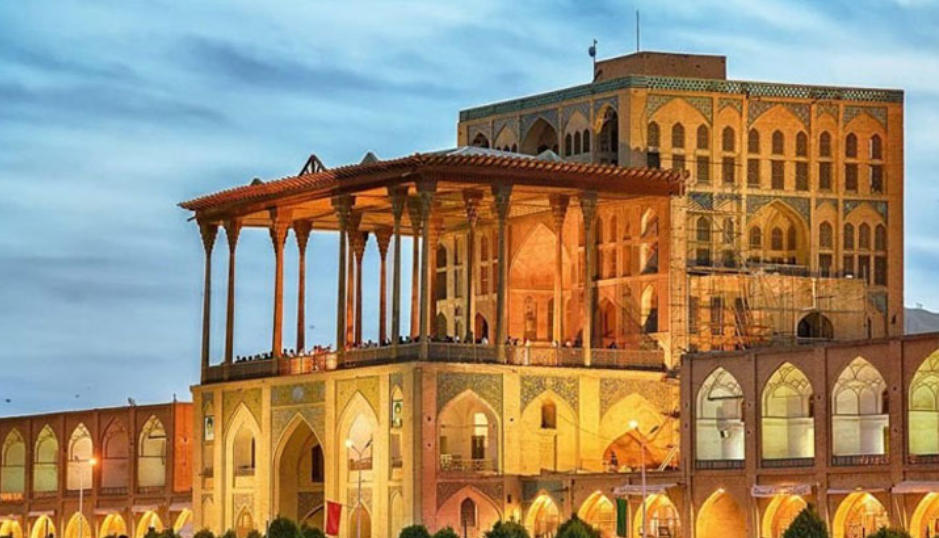
The Ali Qapu Palace is a masterpiece of Safavid architecture. It is a blend of Persian, Turkish, and European influences. The palace is decorated with intricate stucco work, paintings, and mirrors. The architecture is both elegant and imposing. The Ali Qapu Palace is a UNESCO World Heritage Site and one of the most popular tourist attractions in Isfahan.
The history of the Ali Qapu Palace can be divided into three phases:
- The first phase, from 1590 to 1595, saw the construction of the two-story atrium.
- The second phase, from 1602 to 1604, saw the addition of two more floors and the Mirror Hall.
- The third phase, from 1614 to 1620, saw the addition of the final two floors and the Throne Room.
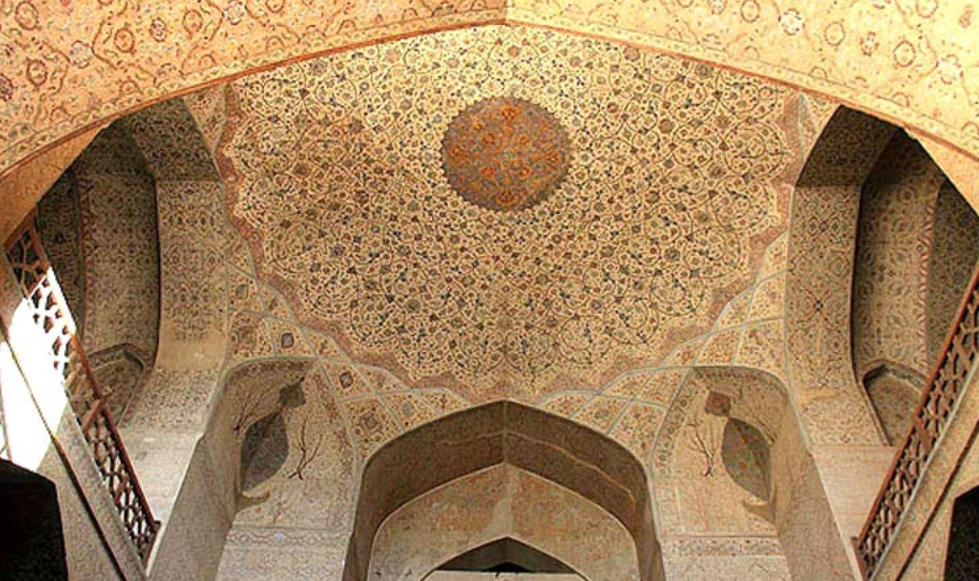
The Ali Qapu Palace was used by the Safavid emperors for a variety of purposes. It was a place for holding court, entertaining foreign dignitaries, and performing music and dance. The palace was also used as a watchtower, as it offers a panoramic view of the Naqsh-e Jahan Square and the surrounding city.
The Ali Qapu Palace is a testament to the power and wealth of the Safavid dynasty. It is also a reminder of the rich cultural heritage of Iran. The palace is a must-see for any visitor to Isfahan.
In addition to the information I have already mentioned, here are some other interesting facts about the Ali Qapu Palace:
- The palace is named after Ali Qapu, a Turkish word meaning “high gate”.
- The palace is decorated with over 1,000 mirrors, which were imported from Venice.
- The palace has a unique acoustic system, which allows the sound of music to travel from the Music Room to the Throne Room.
- The palace is said to be haunted by the ghost of Shah Abbas I.
The Ali Qapu Palace is a truly magnificent building. It is a masterpiece of Safavid architecture and a symbol of the power and wealth of the Safavid dynasty. It is also a reminder of the rich cultural heritage of Iran.
Ali Qapu Palace plan :
The Ali Qapu Palace is a six-story structure, each floor accessible by a difficult spiral staircase. The plan of the palace is asymmetrical, with the main entrance on the west side. The ground floor is a vast atrium with a domed ceiling. The first floor is decorated with intricate stucco work and paintings. The second floor is known as the Mirror Hall, and is decorated with mirrors and stained glass. The third floor is the Music Room, which has deep circular niches in the walls that have both aesthetic and acoustic value. The fourth floor is the Throne Room, where the Safavid emperors held court. The fifth floor is a private balcony with a panoramic view of the Naqsh-e Jahan Square. The sixth floor is a roof terrace with a view of the surrounding city.
Here is a more detailed plan of the Ali Qapu Palace:
- Ground floor: The ground floor is a vast atrium with a domed ceiling. The atrium is flanked by two iwans (arched openings), one leading to the Mirror Hall and the other leading to the Music Room.
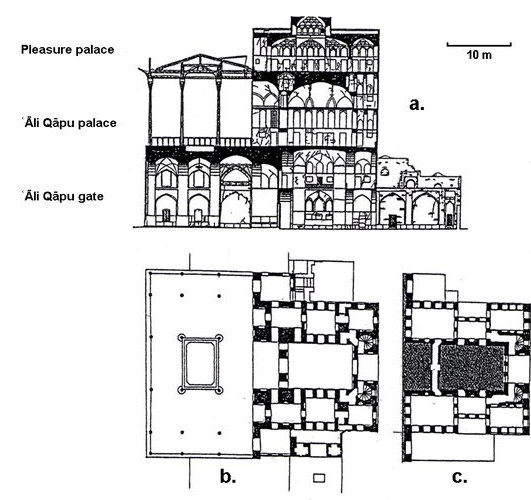
- First floor: The first floor is decorated with intricate stucco work and paintings. The main features of the first floor are the Throne Room and the Mirror Hall.
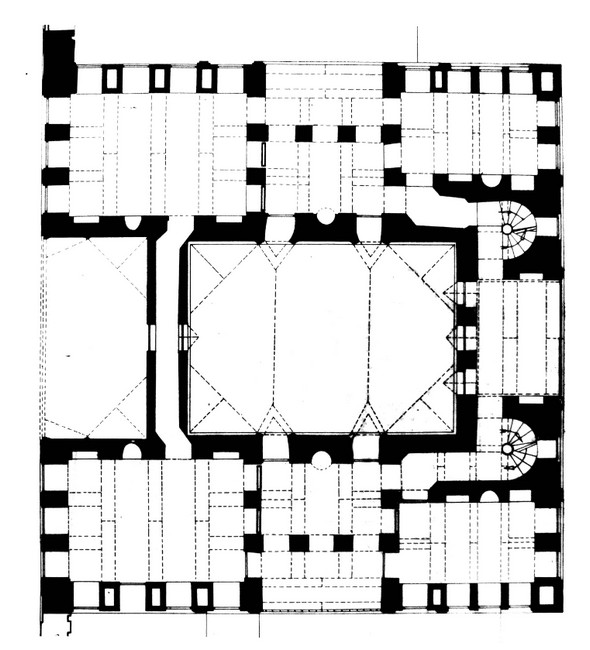
- Second floor: The second floor is known as the Mirror Hall. It is decorated with mirrors and stained glass. The Mirror Hall is used for special occasions, such as weddings and receptions.
- Third floor: The third floor is the Music Room. It has deep circular niches in the walls that have both aesthetic and acoustic value. The Music Room is used for musical performances and other entertainment events.
- Fourth floor: The fourth floor is the Throne Room. It is where the Safavid emperors held court. The Throne Room is decorated with elaborate stucco work and paintings.
- Fifth floor: The fifth floor is a private balcony with a panoramic view of the Naqsh-e Jahan Square. The balcony is used by the royal family to watch public events in the square.
- Sixth floor: The sixth floor is a roof terrace with a view of the surrounding city. The roof terrace is used for relaxation and contemplation.
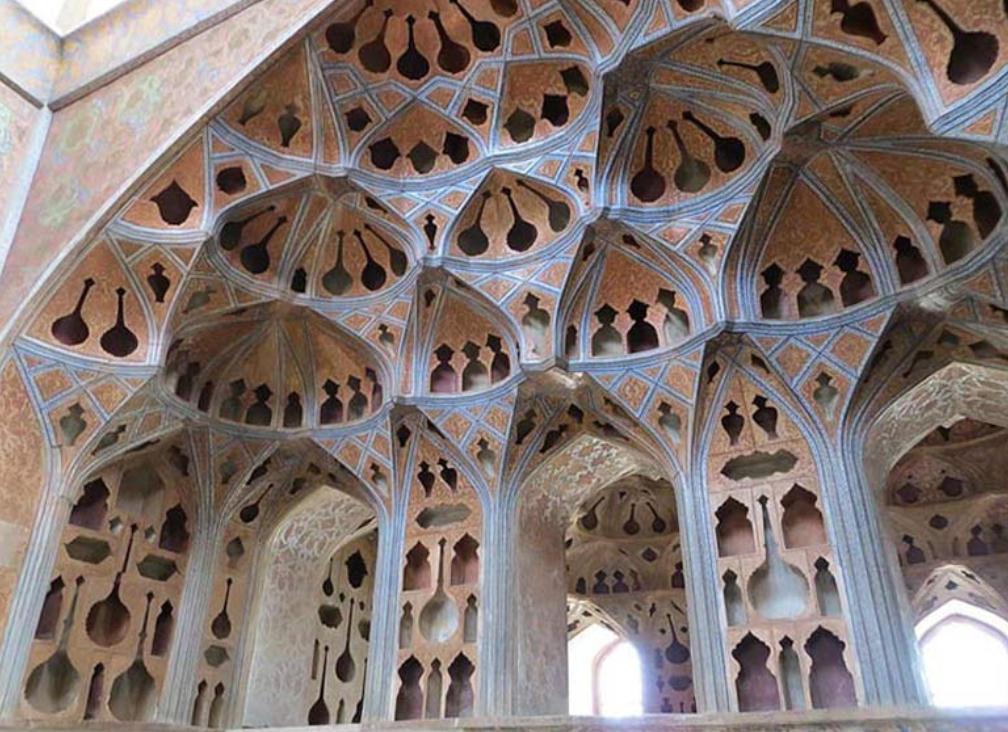
The plan of the Ali Qapu Palace is a reflection of its function as a royal palace. The ground floor is used for public functions, such as welcoming foreign dignitaries. The upper floors are used for private functions, such as holding court and entertaining guests. The roof terrace is used for relaxation and contemplation.
The Ali Qapu Palace is a masterpiece of Safavid architecture. It is a blend of Persian, Turkish, and European influences. The palace is decorated with intricate stucco work, paintings, and mirrors. The architecture is both elegant and imposing. The Ali Qapu Palace is a UNESCO World Heritage Site and one of the most popular tourist attractions in Isfahan.
Ali Qapu Palace facts :
Here are some facts about the Ali Qapu Palace:
- The palace is located in Isfahan, Iran, on the western side of the Naqsh-e Jahan Square.
- It was built by the Safavid king, Shah Abbas I, in the early 17th century.
- It is a six-story structure, each floor accessible by a difficult spiral staircase.
- The palace is decorated with intricate stucco work, paintings, and mirrors.
- The palace is a UNESCO World Heritage Site and one of the most popular tourist attractions in Isfahan.
- The name “Ali Qapu” means “high gate” in Turkish.
- The palace is decorated with over 1,000 mirrors, which were imported from Venice.
- The palace has a unique acoustic system, which allows the sound of music to travel from the Music Room to the Throne Room.
- The palace is said to be haunted by the ghost of Shah Abbas I.
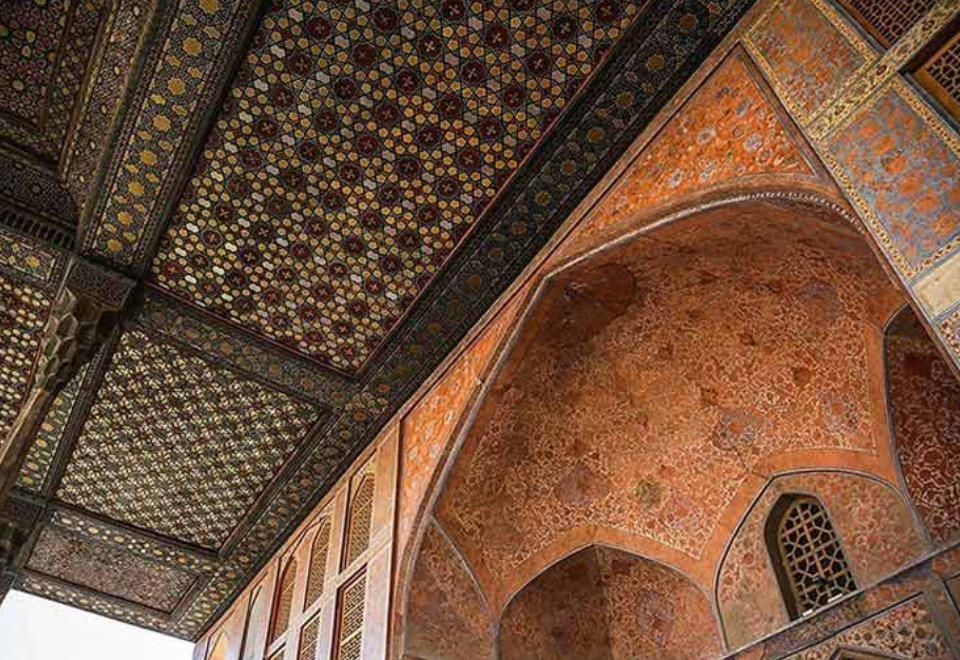
The Ali Qapu Palace is a truly magnificent building. It is a masterpiece of Safavid architecture and a symbol of the power and wealth of the Safavid dynasty. It is also a reminder of the rich cultural heritage of Iran.
Here are some of the interesting features of the Ali Qapu Palace:
- The Mirror Hall: This is the second floor of the palace, and it is decorated with mirrors and stained glass. The Mirror Hall is used for special occasions, such as weddings and receptions.
- The Music Room: This is the third floor of the palace, and it has deep circular niches in the walls that have both aesthetic and acoustic value. The Music Room is used for musical performances and other entertainment events.
- The Throne Room: This is the fourth floor of the palace, and it is where the Safavid emperors held court. The Throne Room is decorated with elaborate stucco work and paintings.
- The Private Balcony: This is the fifth floor of the palace, and it has a panoramic view of the Naqsh-e Jahan Square. The balcony is used by the royal family to watch public events in the square.
- The Roof Terrace: This is the sixth floor of the palace, and it has a view of the surrounding city. The roof terrace is used for relaxation and contemplation.
The Ali Qapu Palace is a must-see for any visitor to Isfahan. It is a truly magnificent building that is full of history and beauty.
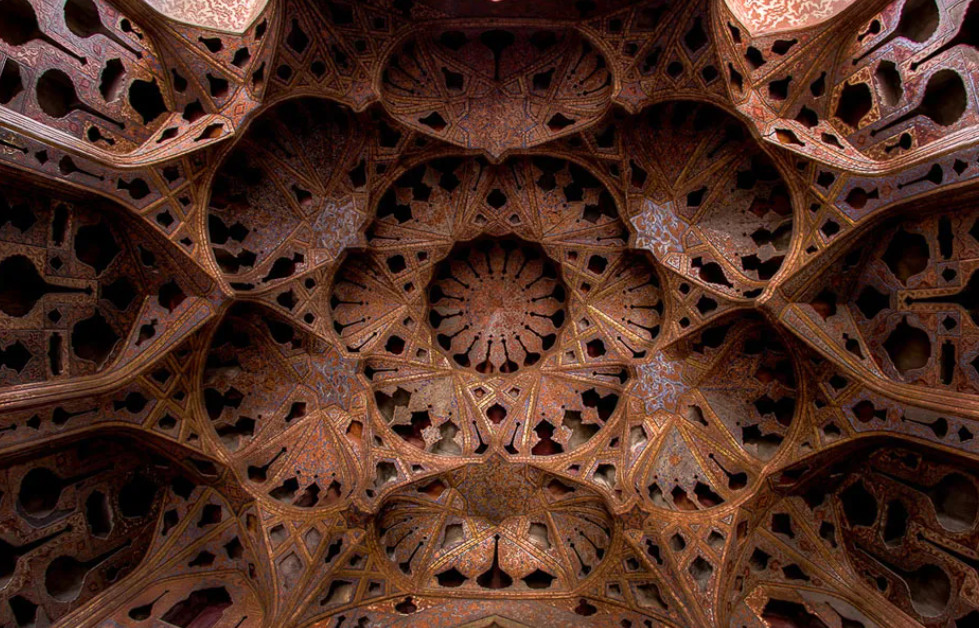
Ali Qapu palace Music Hall :
- The Music Hall is located on the third floor of the Ali Qapu Palace.
- It is a large room with a high ceiling and deep circular niches in the walls.
- The niches are not only aesthetically pleasing, but they also have acoustic properties that help to amplify the sound of music.
- The Music Hall was used by the Safavid emperors to host musical performances and other entertainment events.
- It is still used for concerts and other cultural events today.
The Music Hall is one of the most impressive rooms in the Ali Qapu Palace. It is a testament to the ingenuity of the Safavid architects and their understanding of acoustics. The Music Hall is a must-see for any visitor to Isfahan.
- The room is decorated with intricate stucco work and paintings.
- The ceiling is made of wood and is decorated with stars and other celestial motifs.
- The niches are lined with marble and are topped with muqarnas, which are a type of Islamic architectural ornament.
- The room is said to have excellent acoustics, which is why it was used for musical performances.
The Ali Qapu Palace Music Hall is a beautiful and fascinating room. It is a reminder of the rich cultural heritage of Iran and the ingenuity of the Safavid architects.
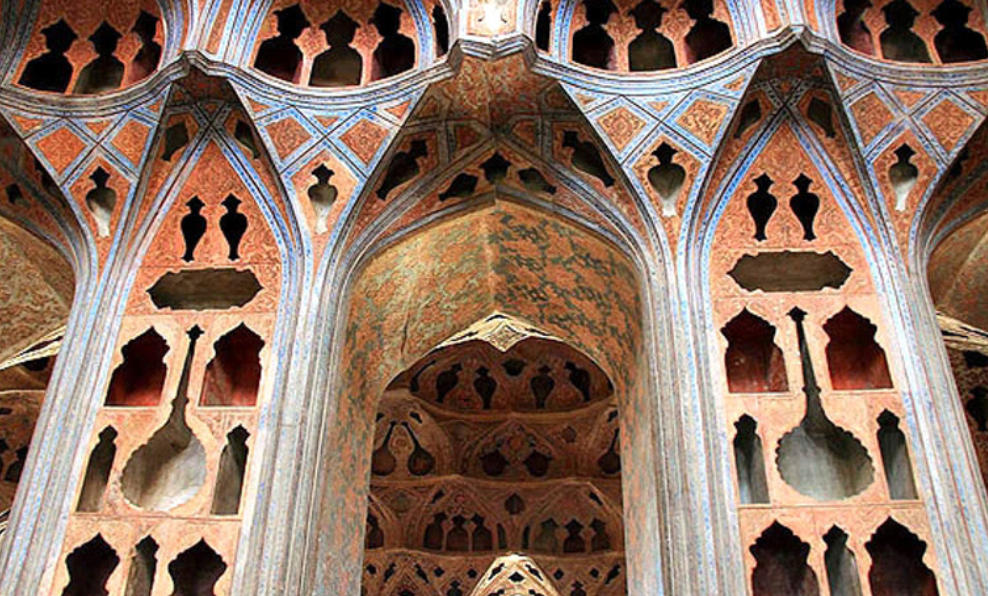
Who was the architect of Ali Qapu?
The architect of the Ali Qapu Palace is unknown. However, it is believed that the palace was designed by a team of architects, including Master Ali Akbar Isfahani, who was the chief architect of the Safavid court.
Master Ali Akbar Isfahani was a renowned architect who was responsible for many of the most important buildings in Isfahan, including the Sheikh Lotfollah Mosque and the Chehel Sotun Palace. He was known for his innovative use of space and his mastery of Persian architecture.
The Ali Qapu Palace is a masterpiece of Safavid architecture. It is a blend of Persian, Turkish, and European influences. The palace is decorated with intricate stucco work, paintings, and mirrors. The architecture is both elegant and imposing. The Ali Qapu Palace is a UNESCO World Heritage Site and one of the most popular tourist attractions in Isfahan.
What was Ali Qapu Palace used for?
The Ali Qapu Palace was used for a variety of purposes, including:
- Reception of foreign dignitaries: The palace was used to welcome and entertain foreign dignitaries. The ground floor was used for public functions, such as welcoming foreign dignitaries. The upper floors were used for private functions, such as holding court and entertaining guests.
- Enthronement of the Safavid Shahs: The palace was used for the enthronement of the Safavid Shahs. The fourth floor, the Throne Room, was where the Safavid emperors held court. The Throne Room is decorated with elaborate stucco work and paintings.
- Musical performances: The palace was used for musical performances and other entertainment events. The third floor, the Music Room, has deep circular niches in the walls that have both aesthetic and acoustic value. The Music Room is still used for concerts and other cultural events today.
- Viewing of public events: The palace has a panoramic view of the Naqsh-e Jahan Square. The fifth floor, the Private Balcony, was used by the royal family to watch public events in the square.
- Relaxation and contemplation: The roof terrace was used for relaxation and contemplation. The roof terrace offers a view of the surrounding city.
The Ali Qapu Palace is a masterpiece of Safavid architecture and a symbol of the power and wealth of the Safavid dynasty. It is also a reminder of the rich cultural heritage of Iran.


